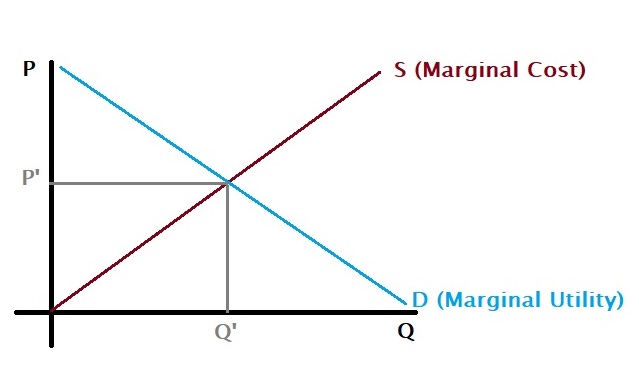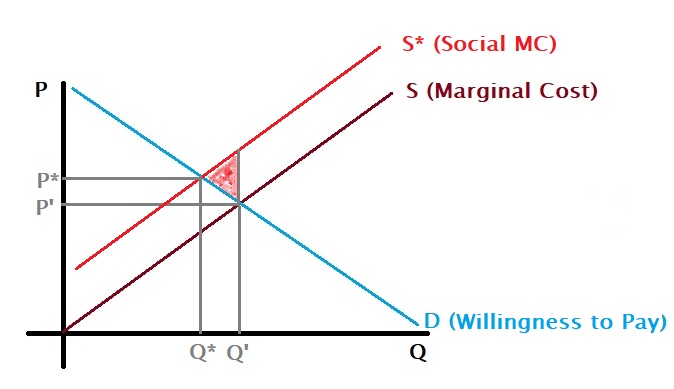The economics of climate change is simple. Climate change is a cost that the firms and the consumers in the market aren’t willing to pay. Economists call this cost a negative externality.
We know from one of the earlier posts the existing Pareto equilibrium exists in the market. The players we considered, the companies and the buyers, do not like to pay the cost as they think it will make them worse off.
Here is the original Pareto efficient system that (only) takes care of the marginal cost to the company and the customer’s willingness to pay.

But this doesn’t care about the climate cost to society. It is the cost society must pay, but the supplier and the consumer do not. Had you included that, the actual cost curve would have been like this (red line), and consumption would have been lower, at Q* at a higher price, P*.

But that doesn’t happen, and consumption is higher at Q’. The triangle (red), formed below the social marginal cost curve bounded by the actual consumption and what it should have been, is the “destroyed value”.
How can society force the system to pay the price? That is next.

